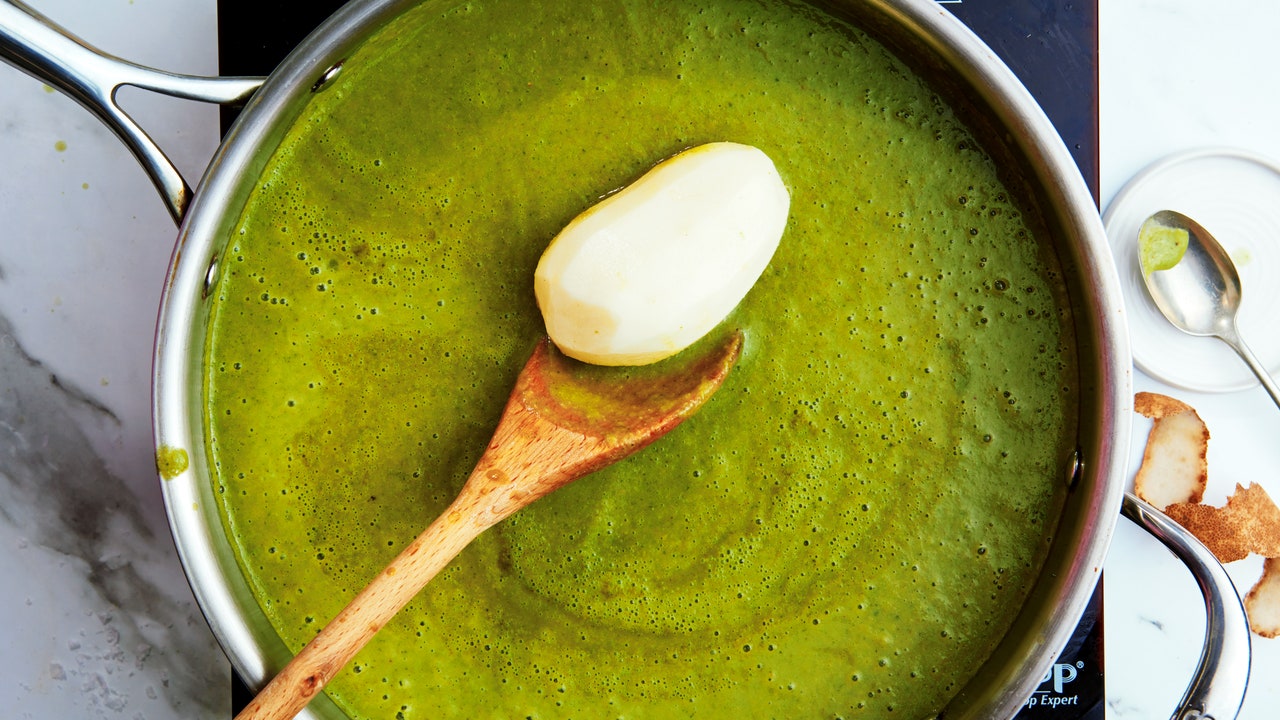Here’s How to Make Food Less Salty
The content in the ArticlePageChunks
element provides tips on how to make food less salty and includes techniques for fixing oversalted dishes. The article suggests diluting the dish with water, bulking it up with additional ingredients, adding acid, using dairy products, and sweetening the dish to balance out the saltiness. It also includes tips for avoiding oversalting in the future, such as seasoning in stages and tasting the food as you cook. Additionally, it mentions the old wives' tale of using a potato to absorb excess salt in soups or stews, although the effectiveness of this method is considered mild at best. The article provides practical advice for home cooks who find themselves dealing with oversalted dishes. Adjusting flavors in your dish is essential for achieving the perfect balance. Consider all the ingredients that contribute to saltiness, such as soy sauce, Parmesan cheese, olives, capers, and miso paste. To offset the saltiness, pair these ingredients with something acidic.
Be mindful of your measurements to avoid over-seasoning. Measure out your salt separately before adding it to your dish to prevent any mishaps. Additionally, be sure to remove excess salt from store-bought ingredients like canned goods or cured meats by rinsing them before use.
Choosing the right type of salt is crucial for achieving the desired flavor profile. Follow your recipe's instructions on the type of salt to use, whether it's kosher salt or sea salt. Different salts have varying levels of saltiness, so using the correct type is key to avoiding an oversalted dish.
When using iodized salt or fine-grained salt in place of kosher salt, be cautious as they are saltier by volume and can lead to a bitter taste if used excessively. Pay attention to the salt content of your ingredients and adjust accordingly to create a well-seasoned dish.
Be mindful of your measurements to avoid over-seasoning. Measure out your salt separately before adding it to your dish to prevent any mishaps. Additionally, be sure to remove excess salt from store-bought ingredients like canned goods or cured meats by rinsing them before use.
Choosing the right type of salt is crucial for achieving the desired flavor profile. Follow your recipe's instructions on the type of salt to use, whether it's kosher salt or sea salt. Different salts have varying levels of saltiness, so using the correct type is key to avoiding an oversalted dish.
When using iodized salt or fine-grained salt in place of kosher salt, be cautious as they are saltier by volume and can lead to a bitter taste if used excessively. Pay attention to the salt content of your ingredients and adjust accordingly to create a well-seasoned dish.
